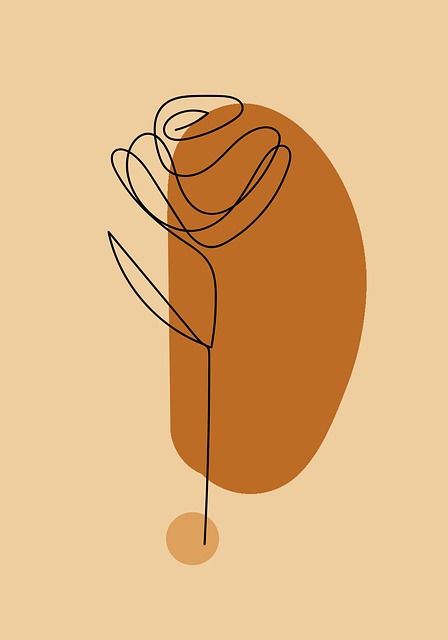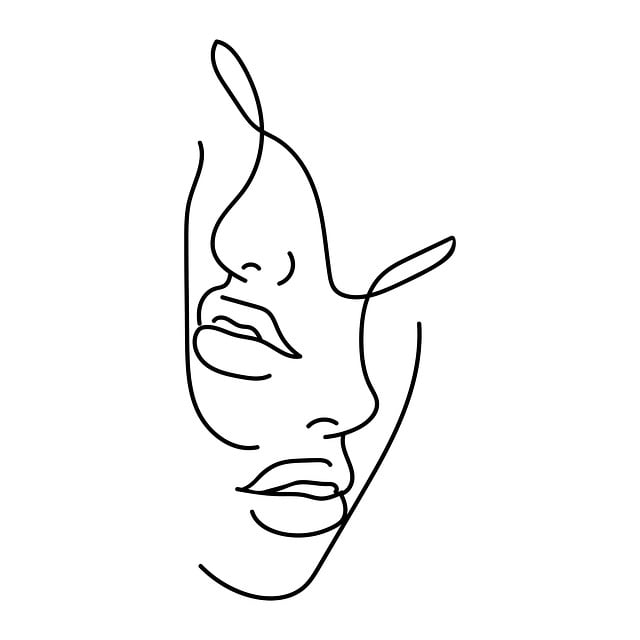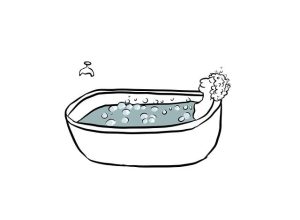Botox is a safe and popular solution for reducing facial wrinkles, particularly on the forehead and between the eyebrows (frown lines). It works by temporarily paralyzing muscles through injections of a protein derived from bacteria. Administered by trained professionals, Botox eases dynamic creases caused by muscle contractions with minimal side effects. Regular treatments offer both short-term smoothing and long-term preventative measures, lasting 4-6 months or longer. Extensive studies and patient testimonials highlight its safety and effectiveness when used properly. Ideal candidates have realistic expectations, maintain good health, and commit to regular maintenance sessions. Proactive follow-ups with dermatologists ensure optimal outcomes and help sustain desired aesthetic results.
Botox has emerged as a popular solution for reducing the appearance of forehead lines and frown lines, offering both immediate and potential long-term results. This article delves into the comprehensive world of Botox, exploring its safety and efficacy over time. From understanding the science behind its application to assessing common side effects, we guide you through every step. We examine who makes a good candidate for long-term treatment, the importance of a tailored plan, and how to maintain results. Long-term studies and real-life patient experiences further highlight Botox’s potential as a safe, effective solution for cosmetic enhancements.
Understanding Botox: A Comprehensive Overview

Botox, a highly effective neurotoxin derived from bacteria, has emerged as a popular and safe solution for reducing facial wrinkles, particularly focusing on the forehead and frown lines. When administered by trained professionals, Botox works by temporarily paralyzing muscles, easing dynamic creases that form over time due to repeated contractions. This non-invasive procedure offers a significant advantage in aesthetics, providing a smoother, more youthful appearance without surgery or extended recovery periods.
The safety of long-term Botox use is a topic of interest and ongoing research. Extensive clinical trials and real-world data have consistently demonstrated its efficacy and minimal side effects when injected properly. The most common temporary side effects include mild bruising and headaches, resolving within a few days. Understanding the mechanism of action and the controlled application of Botox for forehead lines and frown lines is crucial in ensuring optimal results while minimizing risks associated with this cosmetic procedure.
The Science Behind Botox for Forehead and Frown Lines

Botox has become a popular non-surgical option for those seeking to reduce the appearance of forehead lines and frown lines. The science behind this procedure involves a simple yet effective process. Botox is a protein derived from bacteria, when injected into specific muscles, it blocks nerve signals that cause muscle contraction. This action prevents the formation of dynamic wrinkles, particularly in areas like the forehead and between the brows where expression lines tend to form and deepen over time.
For Botox to be effective for forehead and frown lines, precise injections are crucial. Dermatologists or trained medical professionals identify the target muscles and inject small amounts of Botox into them. This procedure is typically quick, non-invasive, and well-tolerated by most patients. The results can last for several months, providing a noticeable reduction in wrinkles and a smoother complexion.
Short-Term vs Long-Term Effects of Botox Treatments

In the realm of aesthetics, Botox has emerged as a popular solution for those seeking to reduce the appearance of fine lines and wrinkles, particularly on the forehead and frown lines. When it comes to understanding its effectiveness, a key distinction lies between short-term and long-term effects. Initial treatments often yield immediate results, smoothing out facial contours for several months, which is why many individuals opt for regular sessions. However, the conversation around Botox safety revolves predominantly around long-term use.
Extending beyond temporary alleviation of wrinkles, long-term Botox applications aim to prevent the formation of dynamic lines by temporarily paralyzing muscle contractions. This not only maintains smoother skin but also offers a prolonged period of aesthetic improvement. Studies suggest that for many individuals, the effects of Botox can last up to 4–6 months, or even longer with consistent treatment. This longevity makes it an attractive option for those desiring sustained results in their pursuit of youthful-looking skin.
Assessing Safety: Common Side Effects and Risks

The safety of Botox for forehead lines and frown lines has been a topic of extensive research, with thousands of studies supporting its efficacy and minimal side effects when administered by qualified professionals. Assessing the safety of any medical procedure involves understanding both short-term and long-term potential risks and common side effects.
While Botox is generally considered safe, it’s not without some minor inconveniences. Temporary redness, swelling, or discomfort at the injection site are common. Other possible side effects include headaches, fatigue, and muscle weakness, though these tend to be rare and typically subside within a few days. In rare cases, Botox may cause more serious issues like difficulty swallowing or breathing. However, when administered correctly, the risks of significant adverse reactions are exceptionally low. Long-term studies have shown that Botox remains safe over several years, making it an excellent option for those seeking to mitigate the appearance of fine lines and wrinkles without invasive surgery.
Who is a Suitable Candidate for Long-Term Botox?

People who suffer from chronic frown lines or forehead creases, often caused by emotional stress or heredity, can greatly benefit from long-term Botox treatment. This is especially true for individuals seeking a non-invasive solution to reduce the appearance of these lines without surgery.
The ideal candidate for prolonged Botox injections is someone with realistic expectations and a commitment to regular maintenance. While Botox for forehead lines and frown lines offers significant improvement, it’s a preventative measure that requires ongoing sessions to sustain results. Patients should be in good overall health and have completed their family planning, as the procedure is not recommended during pregnancy or breastfeeding.
Building a Safe and Effective Treatment Plan

Creating a safe and effective treatment plan for Botox begins with understanding individual needs and goals. For those seeking to reduce the appearance of forehead lines and frown lines, it’s crucial to consult with a qualified healthcare provider who can assess skin health, identify appropriate injection sites, and tailor the Botox dose precisely. This personalized approach ensures minimal risks and maximal results.
The plan should incorporate regular follow-ups for ongoing monitoring, allowing adjustments as needed. By adhering to best practices, using FDA-approved products, and trusting experienced professionals, individuals can enjoy long-lasting improvements in their skin’s appearance without significant side effects when receiving Botox for forehead lines and frown lines.
Monitoring and Maintaining Results Over Time

Maintaining the results of Botox treatments requires a proactive approach, especially for those seeking to reduce the appearance of forehead lines and frown lines over the long term. Regular check-ins with a qualified dermatologist or aesthetic specialist are crucial in monitoring the effects and ensuring optimal outcomes. Through these consultations, practitioners can assess whether the treatment is still effective and identify any potential side effects early on.
Additionally, patients should be educated on the need for touch-up sessions to sustain the results. Botox’s effects naturally wear off over time, typically lasting between 3 to 6 months, varying based on individual factors like age and muscle activity. Regular top-ups can help maintain the desired aesthetic, keeping forehead lines and frown lines at bay.
Long-Term Studies: What the Research Says

Long-term studies have consistently shown that Botox is safe and effective for treating forehead lines and frown lines when administered by qualified medical professionals. These studies, spanning over a decade in some cases, have tracked the progress of patients receiving regular Botox injections. The results indicate minimal side effects, with the most common being temporary redness and mild bruising at the injection site.
The research also highlights the preventative aspect of Botox, demonstrating its ability to significantly reduce the formation of new wrinkles over time. This is particularly notable for individuals in their 30s and 40s who seek to delay the appearance of age-related facial lines. By relaxing the muscles responsible for frowning and furrowed brows, Botox can prevent these expressions from causing permanent creases, offering a long-lasting solution for cosmetic concerns related to forehead lines and frown lines.
Patient Testimonials and Real-Life Experiences

Patient testimonials offer a unique perspective on the long-term safety of Botox, providing real-life experiences that complement clinical studies. Many individuals who have undergone Botox treatments for forehead lines and frown lines share their positive outcomes. They report significant reductions in the depth and visibility of these wrinkles, leading to increased confidence and a more youthful appearance. These patients often emphasize the non-invasive nature of the procedure and the natural results they achieved.
These personal accounts highlight the effectiveness and safety profile of Botox over extended periods. Long-term users discuss how regular treatments have maintained their desired aesthetic without any reported adverse effects. Such testimonials build trust and offer encouragement to prospective patients considering Botox for similar concerns, assuring them that these experiences reflect a broader trend of satisfaction and safety.
